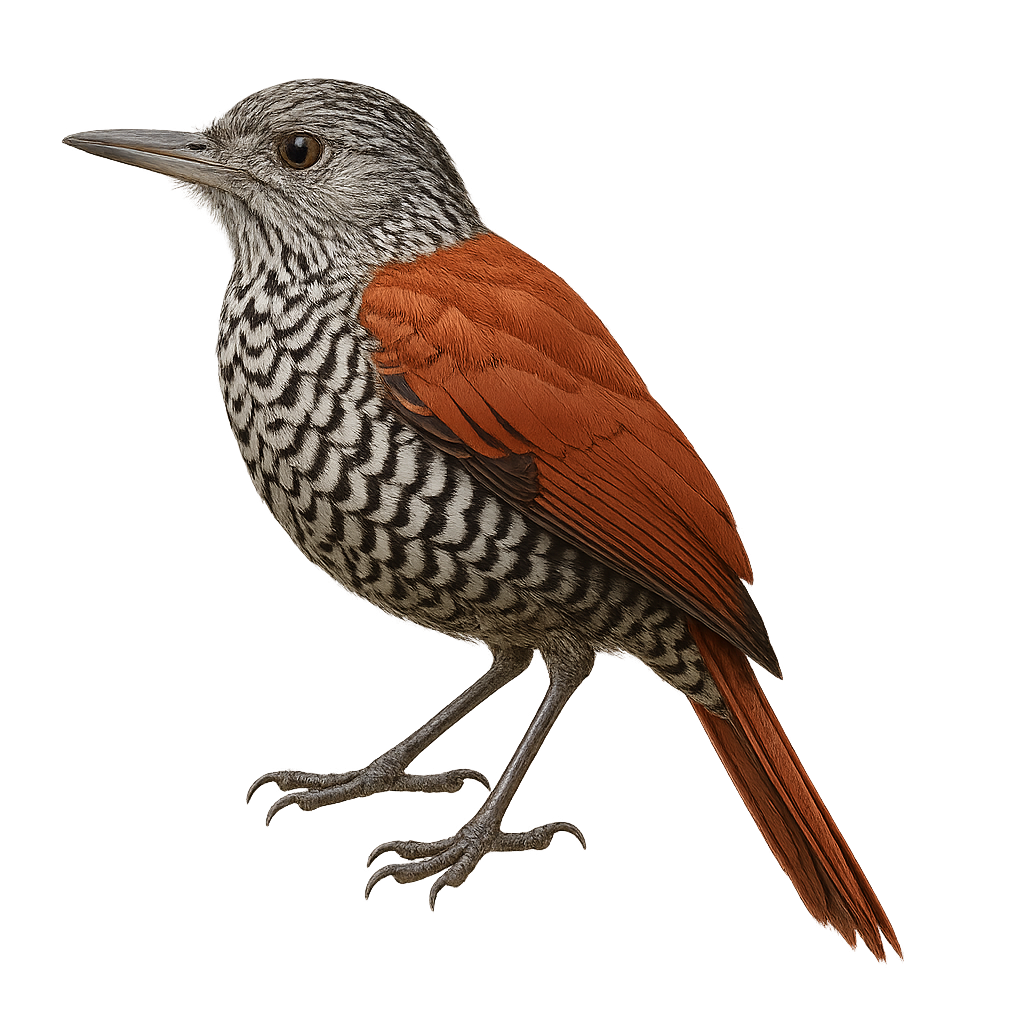Your wildlife photography guide.
Explore the point-tailed palmcreeper in detail, study its behavior, prepare your shots.
Where to observe and photograph the point-tailed palmcreeper in the wild
Learn where and when to spot the point-tailed palmcreeper in the wild, how to identify the species based on distinctive features, and what natural environments it inhabits. The WildlifePhotographer app offers tailored photography tips that reflect the point-tailed palmcreeper’s behavior, helping you capture better wildlife images. Explore the full species profile for key information including description, habitat, active periods, and approach techniques.
Point-tailed Palmcreeper
Scientific name: Berlepschia rikeri

IUCN Status: Least Concern
Family: FURNARIIDAE
Group: Birds
Sensitivity to human approach: Suspicious
Minimum approach distance: 10 m
Courtship display: March to May
Incubation: 15-17 jours
Hatchings: March to June
Habitat:
Palm forests, tropical rainforests
Activity period :
Primarily active during the day, with peak activity in the morning and late afternoon.
Identification and description:
The Point-tailed Palmcreeper is a rare and fascinating bird, endemic to the palm forests of the Amazon. With its olive-brown plumage and distinctive pointed tail, it blends seamlessly into its habitat. This bird is often seen climbing along palm trunks, searching for insects and small invertebrates. Its ability to move skillfully among the fronds allows it to feed efficiently while staying hidden from predators. Although primarily solitary, it can occasionally be seen in small family groups. Its discretion and specific habitat make observing it a real challenge for amateur and professional ornithologists alike.
Recommended lens:
400mm – adjust based on distance, desired framing (portrait or habitat), and approach conditions.
Photography tips:
To photograph the Point-tailed Palmcreeper, it is advisable to use a 400mm or longer telephoto lens to capture detailed images without disturbing the bird. Look for it in palm forests, where it often climbs along the trunks. Be patient and discreet, as this bird is suspicious and easily hides among the fronds. Use a tripod to stabilize your camera and wait for the right moment to capture the bird in action.
The WildlifePhotographer App is coming soon!
Be the first to explore the best nature spots, track rutting seasons, log your observations, and observe more wildlife.
Already 1 432 wildlife lovers subscribed worldwide

